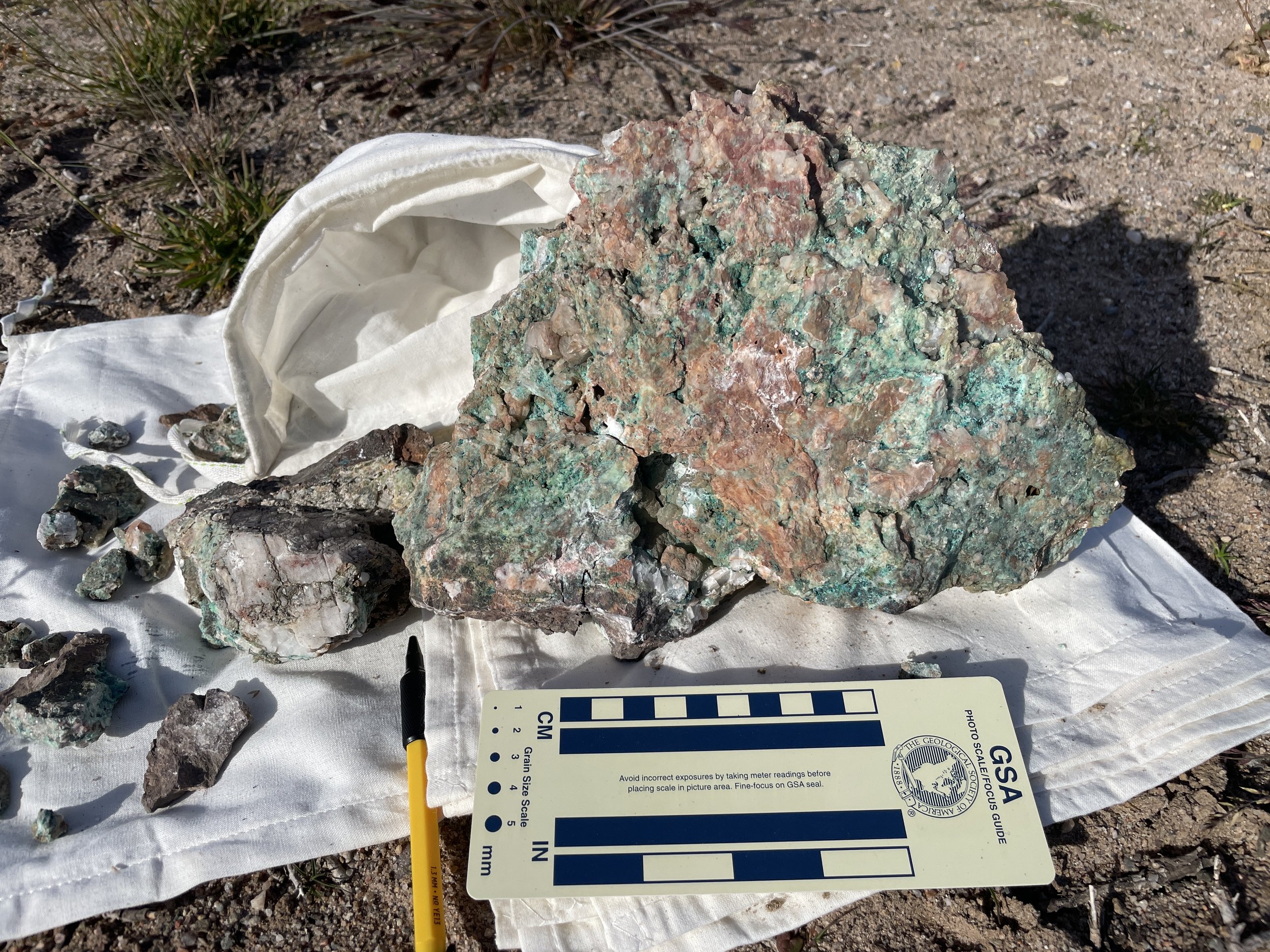ARC PROJECT
We identified the world’s newest metal belt, covering at least 60,000km2, and licenced the most prospective area.
5,774km2 licence prospective for copper and silver
+1kg native copper and silver (~99%Cu), extensive indications of regional fertility yet almost no prior exploration.
+Sulphide-hosted mineralisation of 2.15% Cu, 35.5g/t Ag over 4.5 m true width.
PROJECT SUMMARY
We are exploring the Arctic Rift Copper (ARC) project to explore for copper and silver in the world’s newest metallogenic belt. We have signed a Joint Venture to explore and develop the project to unlock its potential.
ARC is the next stage in our strategy to secure and develop a portfolio of high-quality assets across Greenland. We have defined an entire metallogenic province - Kiffaanngissuseq - ‘independence’ in West Greenlandic. Kiffaanngissuseq is important as it runs 90° to the previous interpretations, which fundamentally changes where to look. When we did look, we found ARC almost immediately.
ARC extends over a very large area containing sediment- and basalt-hosted copper/silver. The ‘Discovery Zone’ prospect is a little-explored series of fault breccias that are interpreted to be a feeder structure for a sediment-hosted deposit. Historical results from this breccia show promising results, with 0.39% Cu and 14.2 g/t Ag across 16 m, including 12.5% Cu, 385g/t Ag peak assay in a zone dubbed ‘Black Earth’. Significantly, this 0.75 to 3.0m thick zone has a minimum grade of 0.62% Cu and 27 g/t Ag. The peak grade is 53.8% Cu and 2,480 g/t Au from a large piece of float next to the Discovery Zone.
The three Discovery Zone faults are mapped over a minimum of 2km along strike, are open in all directions, and have never been drilled. There is potential for significant near term re-rating if a drilling program is enacted. However, we see huge potential in the underlying basalts which are very similar to the 17Mt Cu Keweenaw Peninsula in Michigan, where mines were developed to 1.6 km below surface nearly 100 years ago. There is no longer a system like this being mined anywhere on the planet. 80% of the stream sediment samples contain native copper, and 1kg lumps of native copper are lying around on surface.
MULTIPLE SETTINGS, MULTIPLE TARGETS, PRIME PEDIGREE
ARC contains copper targets across several settings within the mineral system, including the interpreted source of the copper, basalt rocks. Native copper occurs due to hydrothermal enrichment, and we have mapped out the system with a high degree of accuracy. The prevalence and size of the native copper makes the source rocks a significant target for investigation. The intensity of the Discovery Zone which emanates from the basalts is exciting. We also have a pretty good idea where the remaining copper in the fluid may have ended up, a legitimate target in its own right. This is unusual as we have defined an entire mineral system where observable economic potential exists in the source, feeder zone, and final site of deposition.
FRONTIER WORK IN A SUCCESSFUL NEIGHBHOURHOOD
ARC is located 130km south of the world-class Citronen deposit. Based on geochemistry, fluid temperatures, rock age determination, and structural analysis, the Company believes that Citronen formed by the same processes observed in ARC - the Kiffaanngissuseq metallogenic belt. By rotating the interpretation by 90°, with evidence to back it, the linkage between ARC and Citronen becomes obvious. Through this approach, we have identified a +60,000km2 metal belt through which metal-bearing fluids have passed - this is big. We are encouraged by the massive scale of the geological processes and consider that it bodes well for the potential to host world-class deposits.
We are the first to define the huge Kiffaanngissuseq metallogenic belt - there are few companies, let alone individuals, that can make similar claims. Through fresh thinking, we have already reduced this search space from over 60,000km2 to 640km2, and have excellent ideas on where to look within this area - the 6km2 Discovery Zone being one such location.













